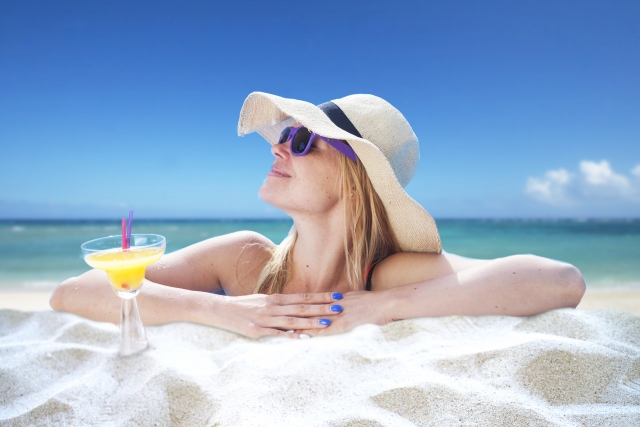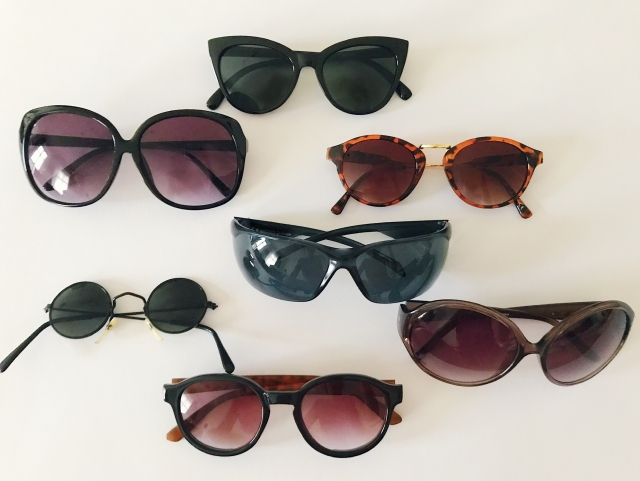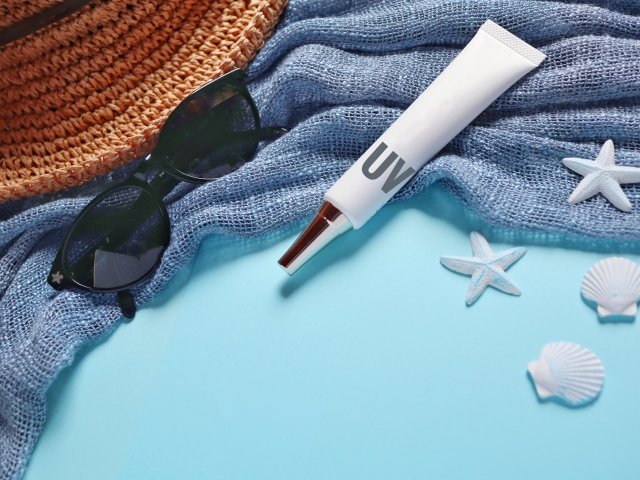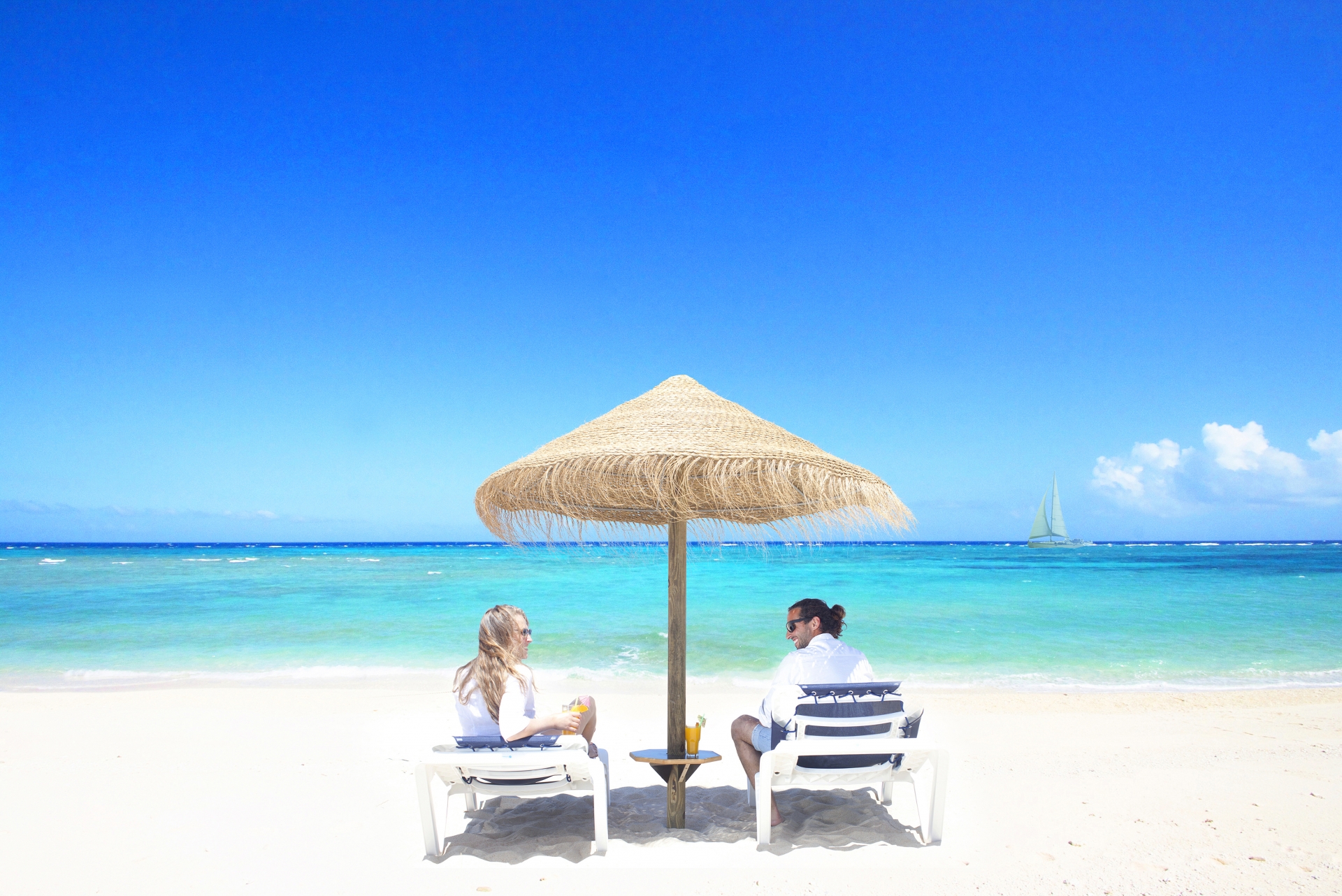Keeping Safe in the Sun this Summer
What do I need to do to protect my eyes from UV rays?

Our favorite season is here!
It’s no secret that during summer, outdoor activities are a must! The feel of the warm sun on your skin is hard to beat, but there are also dangers to be aware of. As I’m sure you’ve heard before, exposure to UV rays from the sun can not only damage your skin, but also your eyes, when you’re unprotected. Especially here in Australia, we are exposed to higher levels of UV rays due to our geographical location in the southern hemisphere and the clearer atmospheric conditions, so protecting your skin and eyes is incredibly important. The best way to protect your eyes from UV rays is to wear UV filtering sunglasses or contact lenses.
What are UV rays?
There are three types of UV rays: UV-A, UV-B, and UV-C.
Ultraviolet A (UV‑A): long-wave UV (soft UV) that is not absorbed by the ozone layer and is associated with skin aging
Ultraviolet B (UV‑B) : medium UV, mostly absorbed by the ozone layer and associated with skin burns (intermediate UV)
Ultraviolet C (UV-C): short-wave ultraviolet (hard UV) that is completely absorbed by the ozone layer and the atmosphere
How Does UV Harm Our Eyes?
We absorb sunlight in three different ways: visible light, UVA rays, and UVB rays. Large quantities of light can react with the chemicals in your eye tissue and can result in damage to your cornea, lens and retina as a result of excessive exposure to UV light. The three most common UV-related eye disorders are cataracts, pterygiums (viscous growths on the eye surfaces), and photokeratitis (corneal sunburn).
According to ophthalmologists, excessive UV exposure increases the risk of eye cancer and macular degeneration. Without eye protection, we run the danger of acquiring an eye condition later in life every time we venture outside in the sun.
What can you do about this then?
The answer is to select sunglasses that will keep your eyes safe.

Prevention is always preferable to treatment!
Understanding UV-blocking eyewears
UV-blocking sunglasses
Sunglasses tested according to Australian standards provide more UV rays (UVR) protection than sunglasses tested according to international standards. Wearing sunglasses that meet the Australian standard ensures that your eyes are adequately protected from UVR damage.
Sunglasses must bear a label stating that they meet the Australian/New Zealand Standard for Sunglasses and Fashion Spectacles.
UV-blocking eyewear is the best investment you can make for your eyes. The four most popular varieties of sunglasses lenses are listed below; pick the one that best suits your requirements as well as the Australian standard requirement.
- Regular lenses : Reduce brightness uniformly.
- Polarizing lenses : Reduce glare from reflections They're ideal for anyone who spends a lot of time on the water.
- Flash/Mirror coated lenses : Reflect as much light away from the eyes as possible. These lenses are only appropriate in extremely bright light conditions, such as on water or in the snow. They are easily scratched, so get a scratch-resistant coating.
- Photochromic lenses : react to the intensity of UV light by darkening outdoors and lighting indoors. The versatility of these lenses means you can wear a prescription in all lighting conditions.
UV-blocking contact lenses
There are also contact lenses with UV-blocking available. Qieto1day (daily use lenses),Acuvue Oasys 1-Day (daily use lenses), Acuvue Oasys (fortnightly lenses) are popular. Find out more UV-blocking contact lenses. We recommend wearing a pair of UV-blocking sunglasses, even if you wear UV-blocking contact lenses, to protect your eyes from strong UV rays!
Other Ways to Reduce UV Exposure
Spending less time in the sun is the simplest way to reduce UV exposure. However, this advice is impractical for anyone who works outside. It also doesn't help if you're anticipating a long and active summer! However, you can reduce your UV exposure without having to stay indoors. The sun's rays are typically strongest between 11am and 3pm. Take advantage of this window of opportunity by doing activities indoors or in the shade.
Always keep a link to the UV index forecast handy. Many weather apps include a UV report, making it simple to check on your phone.
Even if the sky is cloudy, wear sunscreen as these harmful rays are always present. Choose light-colored clothing that covers as much skin as possible, as well as a wide-brimmed hat to protect your face and neck. Remember, slip, slop, slap and wrap!
On any exposed skin, apply sunscreen with an SPF of at least 30. Take extra precautions to keep your children covered when they are out. Keep in mind that a busy day outside necessitates the use of an SPF 50 sunscreen.
Sunscreen can only be sold in Australia if they are listed on the TGA's Australian Register of Therapeutic Goods (ARTG) and meet the Australian Standard for sunscreens. The TGA must approve all active ingredients in sunscreen and their maximum concentration, to ensure they are both safe and effective. Learn more about how to use sunscreen properly.
Protect Your Eyes and Skin from UV Rays!

Take the necessary precautions to protect your eyes and skin from harmful UV rays. This summer, do everything you can to protect your family from the sun's harmful rays. You can still enjoy the summer sun while being proactive about your eyes and skin health!

